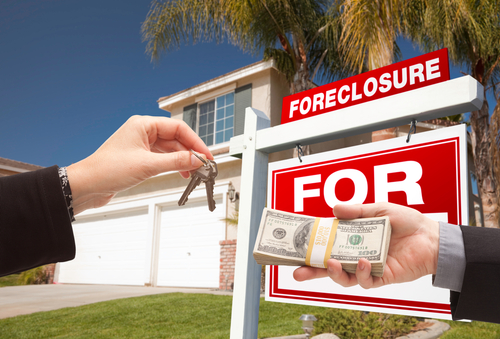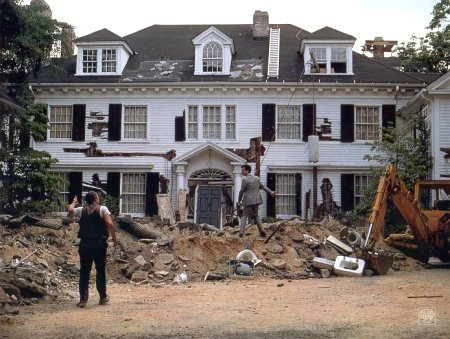While bank-owned foreclosure homes (also called REO’s – stands for Real Estate Owned) are plentiful in many markets, in some they are harder to come by. Take for example Pinellas County, where foreclosures account for just over 4% of the total market and thus they aren’t always easy for a buyer to get. Foreclosures sometimes sell at bargain prices when compared to non-distressed listings. These ultra-low prices are attracting investors and all-cash offers, which makes it difficult for other buyers’ bids to win out.
So how can you beat the competition to get a foreclosure property? First of all – realize there are two types of foreclosures. The ones you buy at the courthouse steps and the ones on the open market that have been placed in the Multiple Listing Service – (REO’s).
Here’s are the problems with buying them on the courthouse steps:
1. You need cash in hand. So all of you who actually need a mortgage (95% of the population!), you are out of the game. Otherwise you need a cashier’s check or money order in hand, and be prepared to do battle with seasoned investors who’ve done their homework.
2. There’s no inspection period. You are buying sight unseen, without having been inside the property, without a licensed home inspector checking out the property. You could be buying the house from The Money Pit for all you know.
3. Better make sure you’ve done a title search. If not – guess what – you don’t know if there’s a $20,000 lien on the property for past due HOA fees, or liens for any other reason. It’s a huge risk. You’ve really got to do your homework on courthouse foreclosure sales.
4. You are often bidding against a bank employee who will always win. Let me explain. Let’s say the house’s value is $100,000. Bidding starts at $100. The bank sends their own representative to the courthouse and they bid $1,000,000. What? It’s not worth $1,000,000 you say? But guess what – the bank doesn’t have to pay themselves $1,000,000. They just do this to get the property back in their name, and then they will often fix it up a bit (sometimes, not always) and put it back on the open market by listing it with a Realtor as an REO. If a bank rep doesn’t show up, you can guarantee that at a minimum you’ll be bidding against some other seasoned real estate investors who have cash in hand and have done their homework.
Okay, so you’ve now decided you don’t want all that risk of buying a home on the courthouse steps, and you’d really like to check out some REO’s. Now what?
How to Buy an REO Foreclosure Home in Tampa Bay:
1. Hire a Great Realtor. (Cough cough.) But seriously – you need a Realtor who has experience with short sales and foreclosures. Having a Realtor who understands the process will help immensely in preparing your offer and negotiating the terms and getting to the closing table.
2. Check Out the Competition: First, don’t make up your mind that foreclosures are the best deals in town. Go with me on this. Sometimes they really aren’t! Tell your Realtor what you are looking for in a home or investment property, and make sure you check out all the different listing types from regular sales, to short sales to foreclosures. Sometimes you may be shocked to find that the regular listings prices are just as competitively priced, with less of the red tape that comes with an REO or short sale.
3. Get the first look: Fannie Mae and Freddie Mac’s First Look program offers first-time home buyers and others who need financing and are looking for a primary residence the first opportunity to see bank-owned homes before investors. Buyers have a 15-day window to submit offers before investors have the opportunity to start bidding. Keep in mind, the bank will review offers usually for the first 30-45 days however, so if you are financing, you’ll need to make your offer very strong to compete with the investors who have cash. If you have cash – by all means – offer cash. The reasons lenders (and everyone) prefer cash is because its one less contingency in the contract, and they can close more rapidly than if they have to wait for a loan to be processed which normally takes 30-45 days.
4. Submit a competitive offer: Homes priced at heavy discounts can be in high demand and attract multiple bids – often we are seeing these properties sell for over the asking price. Why would anyone offer an amount over the asking price you may be wondering? Banks are underpricing properties like this on purpose in order to create an auction-like effect. Multiple buyers fall in love with a good looking property at a really low price. Suddenly they end up in a bidding war, sometimes driving the price back up to market value, often at prices near or at what regular non-distress sales in the same area are selling for. Have your Realtor pull the comparable sales in the neighborhood, just as you would with any home you are considering purchasing so you know what a competitive offer would be. Then offer what you are comfortable paying while still feeling like you got a fair shake. Low-ball offers won’t go far these days and I’ve had some buyers learn this the hard way on foreclosure properties.
5. Make a larger deposit: Whether you are financing or paying cash, sometimes it can help to get the bank’s attention by offering a larger than normal good-faith deposit. However, make sure you AND your Realtor read the bank’s contract or addenda very carefully to be sure your deposit is not at risk, and that you have sufficient inspection and financing contingencies in the contract. It may even be a good idea to have an attorney review the contract as banks usually have their own set of contracts that are different than what Realtors are used to seeing (the FAR or FAR/BAR standard Florida contract). Some bank contracts state that there is no inspection period and the buyer is “deemed to have already conducted inspections” at the time the offer is submitted. Yikes! Even if you really want the property, don’t cave in to unreasonable demands, like waiving a home inspection.
Click to Search Bank Owned REO Foreclosures in Tampa Bay




Leave a Reply